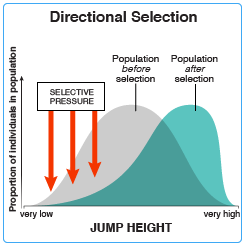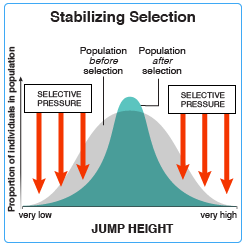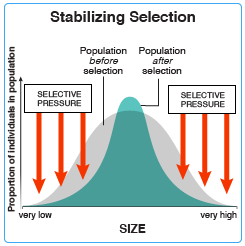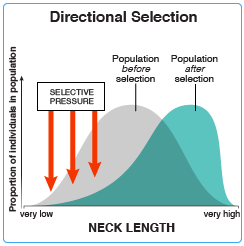SCENARIO 1: Individuals in a population of deer vary in their jumping ability. Deer that can only make low hops move slowly and cannot escape hunters very well, whereas deer that can jump very high often make hard landings, injuring themselves in turn. This also makes them vulnerable to hunters. Which deer will be selected for in this scenario?
SCENARIO 2: A population of fish includes small to large individuals. The smallest individuals can escape predators by hiding in crevices in underwater rock formations. The largest individuals escape predation by using their powerful tails to thrash around violently, making it difficult for predators to capture them. Intermediate-sized individuals, however, are too large to hide in rocks and are not strong enough to fight off predators; therefore, they often get eaten. Which fish will be selected for?
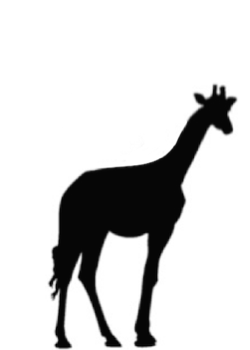
SCENARIO 3: A population of giraffes includes individuals with a range of neck lengths, from short to long. Wildfires have destroyed nearly all of the low-lying shrubs and vegetation in the giraffes’ habitat, restricting their food source to the highest branches of tall trees. Which giraffes will be selected for?


